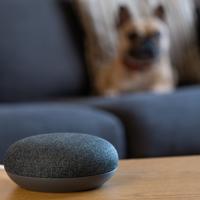In today's smart lifestyle, streaming devices have become essential for enhancing our entertainment experience. Among the myriad of choices available, Roku, Amazon Fire Stick, and Google Chromecast stand out. Each has its own set of features and quirks, making them suitable for different types of users. Let's take a closer look at these popular options to see how they stack up against each other.
Roku
Roku has been a pioneer in the streaming space and is known for its wide range of devices, from basic models to high-end ones. Here are some key aspects of Roku devices:
Ease of Use: Roku is often praised for its simple, user-friendly interface. The remote comes with dedicated buttons for streaming services such as Netflix and Disney+.
Content Availability: Roku boasts an impressive library of available channels, with thousands of apps and services, including major ones like Netflix, Hulu, and Amazon Prime Video. It also offers the Roku Channel, providing free, ad-supported content.
Search Functionality: Roku's cross-platform search allows users to find shows and movies across different services, showing where they're available and at what cost, if any.
Price Range: From the budget-friendly Roku Express to the feature-packed Roku Ultra, there's a device for different needs and budgets.
Fire Stick
Amazon's Fire Stick is part of the Fire TV family and aims to integrate Amazon's ecosystem into your viewing experience. Here are its notable features:
Voice Control: With built-in Alexa, Fire Stick offers comprehensive voice control. This includes searching for content, controlling playback, and even smart home integration.
Amazon Ecosystem: It's particularly appealing for those who are already invested in Amazon services, offering a seamless experience with Prime Video, Prime Music, and even shopping.
Content and Apps: Like Roku, Fire Stick offers access to a vast array of apps, including Netflix, Hulu, and YouTube. The Fire Stick is also known for supporting TV Everywhere apps, allowing access to network TV content for cable subscribers. This is just one aspect of comparing different streaming devices.
Performance: The Fire Stick 4K and Fire Stick 4K Max are known for their powerful processing capabilities, providing smooth 4K streaming and quick app navigation.
Chromecast
Google's streaming solution, Chromecast, takes a slightly different approach compared to its peers:
Casting Functionality: Unlike Roku and Fire Stick, Chromecast does not have a traditional remote interface. Instead, it allows users to "cast" or stream content directly from mobile devices, tablets, or computers to the TV. This makes it an excellent option for those comfortable with using their phone as a remote control.
Google Integration: Chromecast integrates well with other Google services. Google Assistant can be used for voice commands, offering convenience for those with Google-friendly homes.
Content Access: While Chromecast supports a range of streaming services, it's particularly popular for casting YouTube and other Google services. Third-party apps like Netflix and Spotify are also seamlessly integrated.
Simplicity and Portability: Its setup is simple, and its compact design makes it easy to move between different Smart TVs, which is a plus for frequent travelers.
Conclusion
Deciding between Roku, Fire Stick, and Chromecast largely depends on your specific needs and existing ecosystem preferences. Each has its strengths—Roku is a solid all-rounder with a simple interface and wide content availability, Fire Stick integrates well with Amazon services and offers comprehensive voice controls, while Chromecast appeals with its casting flexibility and Google integration.
It may be worthwhile to consider your preferred platforms, device compatibility, and how much voice control or casting capability you desire before making a choice. Whichever device you choose, each can enhance your streaming experience and bring a bit more intelligence to your smart lifestyle.



